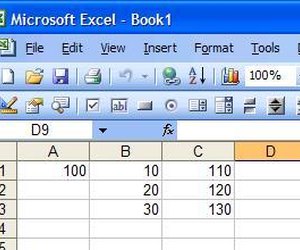
INDIRECT(textref type) textref is a text string specifying the reference to be returned the reference may be to a single cell or to a range. To find out more on this topic, access the 2.0 Migration Guide from the OpenOffice.Returns a reference, given a text string. The above are only a few of the differences between Excel and Calc. In Excel, the number of sheets according to the Microsoft web site ( ) is “Limited by available memory and system resources”. When pressing Delete in Calc, a dialog opens up, where you can choose specifically whether to delete strings, numbers, formulas, notes, formats or objects. To delete contents automatically in Calc, press the Backspace key. When pressing the Delete button in Excel, the contents are automatically deleted. To insert a function in Calc,press Ctrl+F2. WHen you press F5 in Calc, it opens the Navigator. When you press F5 in Excel, you can go to a specific cell. To fill right or fill down in Excel, press Ctrl+R or Ctrl+D. To edit cell comments, press Shift+F2 in Excel, but press Ctrl+F1 in Calc to edit notes. To change from relative to absolute references, press Shift+F4 in Calc but press F4 in Excel. Then the cell can be dragged and dropped. In Calc, select the cell, drag to select a cell adjacent to it, then drag back so that only the desired cell is selected. In Excel, you select the cell or range of cells and simply drag and drop its contents to the new location. On the other hand, =Sheet2!$A$1 when on sheet one and copied to another sheet will refer to the first cell of the next sheet because the sheet is relative. Thus, =$Sheet2!$A$1 always refers to the first cell on sheet 2 because the sheet is absolute.

In Calc, it is possible to have a relative addressing of sheets using the dollar sign. For example, if cell B2 contains the number 6, the formula =B2+1 returns the value, 1. A cell that is defined as text is treated as text, even when a number is entered into it. Excel does not have a similar feature that unifies formatting options with other programs in the MS Office suite.Ĭalc strictly follows the cell format you specified. The styles in the Styles and Formatting floating window in Calc are consistent with other programs. Calc will generate a “#NAME?” error if you use a comma in place of a semi-colon. The Calc equivalnet, called parameters, uses semicolons. The arguments in Excel uses semicolons to separate parameters in a function. More advanced Calc users can go directly to a more stripped-down Function List. It also displays a tree view of the formula structure which is helpful when composing complex formulas. However Calc’s advantage is that it lists the required fields and errors before you insert a function into a cell. Like Excel, Calc users can use a search field. Calc, however, opens its function wizard directly when the user clicks on the Function Wizard icon. After the search, Excel opens the Functions Argument dialog. Excel users search for the proper function by using natural language queries.
:max_bytes(150000):strip_icc()/ExcelTrim-58d184203df78c3c4ff40b87.jpg)
You can even view several spreadsheets at the same time.īoth programs have a function bar at the top of the editing window that opens on a list of functions. Each Calc window provides menus, toolbars and other features that directly relate to the document in that window. This a strong point for Calc because it gives greater accessibility to information about the active document and it is easier to navigate within an SDI. When you close the parent window, all files are also closed. This is called a Multiple Document Interface (MDI).

In Excel, when you open several workbooks, each is displayed within one parent window. This is called a Single Document Interface (SDI). In Calc, when you open several spreadsheets, each spreadsheet opens in its own window. Callouts which appear when the mouse pointer is positioned over the cell are called” comments” in Excel but are referred to as “notes” in Calc.

One tabbed sheet in an Excel workbook is a “worksheet “. One tabbed sheet in a Calc spreadsheet is a “sheet”. The entire file is called a “workbook” in Excel, but is referred to as a “spreadsheet ” in Calc. There are, however, some important differences. The page formats for printing are similar and both programs offer themes for formatting whole sheets. Charts, diagrams, graphics, and text art can be inserted into both. This includes basic arithmetic and simple statistics such as averages, medians, and means. Excel has the advantage of having advanced filters, which allows cells to be arranged according to its format, color, or by some other criteria.Īlmost 80% of the functions are identical. Rows and columns can be shown, hidden or grouped in both. The list-making, sorting and filtering capabilities are comparable. For starters, the user interface, which includes the icons, menus and toolbars are very much alike in appearance and purpose (except for MS Excel 2007).


 0 kommentar(er)
0 kommentar(er)
